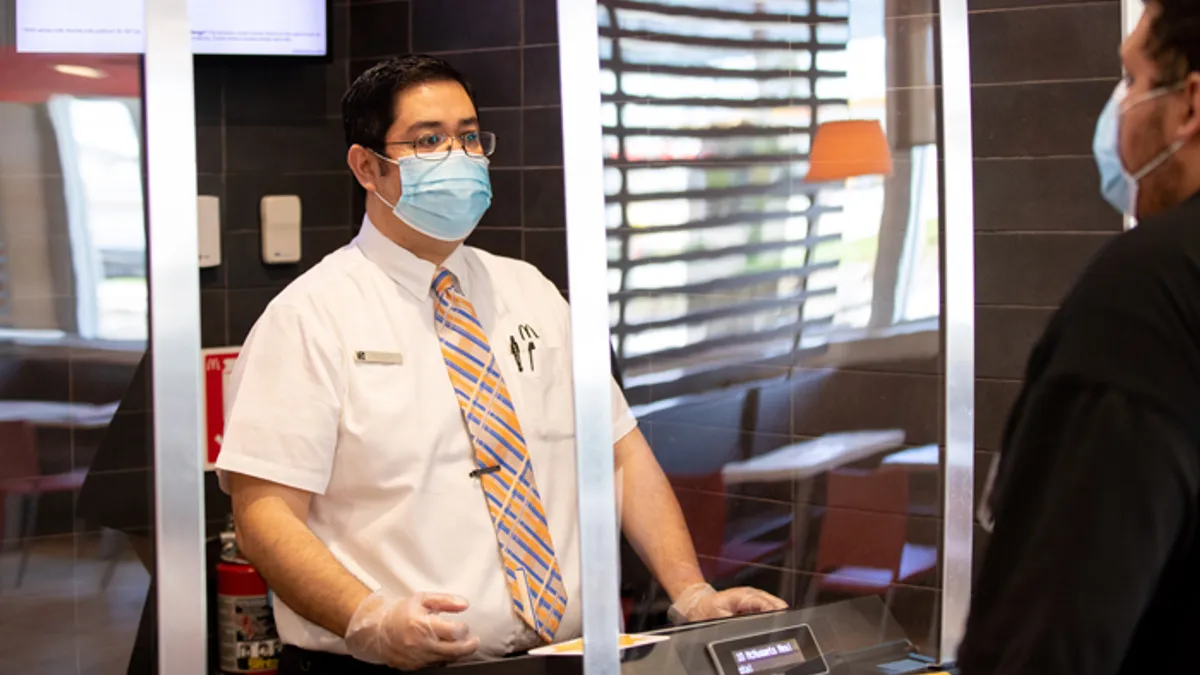Dive Brief:
- The Centers for Disease Control and Prevention updated its COVID-19 guidance this week for retailers and service businesses to prevent workplace violence associated with implementation of coronavirus prevention policies and practices, such as mandatory use of masks, social distancing and limiting capacity.
- Among the agency's employer recommendations are providing employee training on workplace violence response, installing security systems such as panic buttons and alarms and training employees how to use them, assigning two workers to encourage prevention policies are followed and identifing safe areas for employees to go if they feel like they are in danger, such as a room that locks from the inside.
- Employee training should address ways for employees to identify, avoid and respond to violent situations, the agency recommends. Staff should report any potential threats or violent acts to a manager or supervisor and remain aware of and support coworkers during threatening or potentially violent situations. Employees should not argue with a customer if the person makes threats and should not force anyone who is upset to follow prevention policies or other practices related to COVID-19.
Dive Insight:
From physical assault and verbal abuse to employees being shot at, workers have experienced various forms of anger from customers reacting to company policies to prevent the spread of the novel coronavirus. The Service Employees International Union surveyed over 4,100 McDonald's workers and found that 44% of respondents were verbally or physically assaulted by customers who weren't wearing masks.
These violent interactions aren't likely to dissipate any time soon either, especially as more employers, including McDonald's and Starbucks, and local governments require masks to be worn on premise. On Wednesday, Illinois began requiring restaurant and bar patrons to wear a mask while interacting with staff, including when they place an order, receive food and beverages and when an employee services a table.
But while 65% of U.S. residents surveyed by the Pew Research Center from June 4 to 10 said they wore masks all or most of the time, 44% said they saw other people in their communities wearing masks all or most of the time.
And willingness to wear masks also varies depending on the type of retailer. The Federal Reserve Bank of Cleveland found in a survey of over 1,100 U.S. residents from July 3 to 7 that over 70% said they were extremely likely to wear a mask when entering a grocery store versus almost 50% extremely likely to wear one while at a restaurant.
Regardless of how customers feel about wearing masks, they have increasingly been shown to keep people protected. For example, in Seoul, South Korea, a Starbucks patron with the coronavirus spread the disease to over two dozen other customers, but four employees wearing masks did not contract it.















